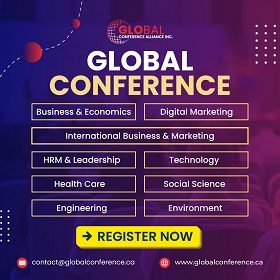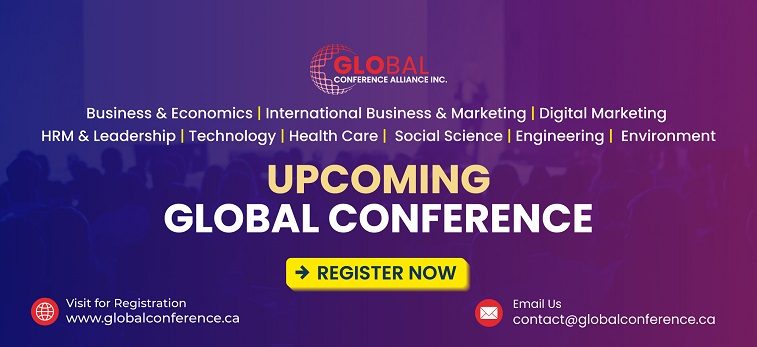A conference paper is a written document that presents research findings or academic ideas at a professional gathering. It allows researchers and professionals to share their work with a broader audience. For those facing tight deadlines, you might be wondering, how to write a conference paper in 2 days?
To write a conference paper in two days, start by managing your time wisely. Create a detailed outline. Focus on writing the core content first, and avoid overthinking while drafting. Efficient research techniques and quick proofreading are also crucial to completing the paper within such a short time frame.
If you’re curious about how to approach this challenge or need tips on time management and structuring your paper, keep reading. This article contains all the essential information you need to craft a strong conference paper under a tight deadline.
Importance of a Well-Written Conference Paper
Your conference paper plays a crucial role in showcasing your expertise and research to a broader audience. It allows you to communicate your findings effectively and contribute to discussions in your field. This not only promotes your professional profile but also opens up opportunities for collaboration and networking.
Quality writing ensures that your ideas are clear and accessible to readers, regardless of their familiarity with the subject. A paper that is structured well and supported by strong evidence can leave a lasting impression on reviewers and attendees alike, helping you make a meaningful impact at the conference.
If you’re preparing to write a paper for upcoming conference, you should focus on clarity and organization. This will help you engage your audience, ensuring that your research is presented in a compelling way. With proper planning and attention to detail, your paper can contribute significantly to the ongoing discourse in your field.
Key Components of a Successful Conference Paper
Writing a successful conference paper is crucial to effectively sharing your research and ideas. It requires careful planning, clear communication, and adherence to specific guidelines. Here are the key components that contribute to a strong conference paper.
- Clear Thesis Statement: A concise thesis statement sets the stage for your paper. It clearly articulates your main argument or research question, guiding readers through your work and providing a focal point for your discussion.
- Engaging Introduction: The introduction should capture the reader’s attention while providing context for your topic. It should outline the significance of your research and briefly present the main points you will cover in the paper.
- Comprehensive Literature Review: A thorough literature review situates your research within the existing body of knowledge. This section highlights relevant studies, identifies gaps, and demonstrates the necessity for your work, establishing validity for your research.
- Methodology Description: Clearly describing your research methodology is vital for transparency and reproducibility. This section should outline the techniques and approaches used in your study, allowing others to understand and evaluate your research process.
- Detailed Analysis: A successful conference paper includes a detailed analysis of the data collected. Presenting your findings clearly and logically is essential, as this strengthens your argument and supports your thesis statement with concrete evidence.
- Conclusions and Implications: The conclusion should summarize your main findings and discuss their implications. Highlight how your research contributes to the field and suggests directions for future work or potential applications.
- Proper Formatting and References: Adhering to the conference’s formatting guidelines is crucial for professionalism. Ensure your paper is well-organized, follows citation standards, and includes a complete list of references, which adds credibility and allows readers to explore your sources.
Focusing on these key components will improve the quality of your conference paper. Careful attention to each aspect ensures your research is communicated effectively and can engage your audience, leading to fruitful discussions.
How to Write a Conference Paper in 2 Days?
A conference paper can be written in two days with the right time management and focus. By breaking the process down into manageable steps and maintaining discipline, you can complete your paper efficiently and effectively. Below are the key steps to help you get started.
Step 1. Prioritize Time Management
When working under a tight deadline, time management is crucial. Dedicate specific blocks of time to different tasks, such as outlining, writing, and editing. Use techniques like the Pomodoro method to maintain focus, ensuring regular breaks to recharge. Creating a schedule will help you stay organized and keep your writing process on track.
Step 2. Develop a Clear Outline
Before diving into writing, create a clear and detailed outline. Organizing your ideas will streamline the writing process and help you focus on the structure of your paper. Break it down into sections, ensuring each part has a specific purpose. A well-organized outline keeps your thoughts coherent and guides your writing efficiently.
Step 3. Write Without Overthinking
When faced with a tight deadline, prioritize getting your ideas down without excessive scrutiny. Resist the urge to edit as you write; instead, allow your thoughts to flow freely. Once the first draft is complete, you can revisit it for revisions. This approach helps maintain momentum and boosts your confidence in meeting the deadline.
Step 4. Focus on the Core Content First
Start by writing the essential sections of your paper, such as the main arguments, analysis, and results. By prioritizing the most crucial content, you ensure that your core ideas are effectively conveyed. Once the key points are established, you can go back to write the introduction and conclusion, making the writing process more efficient.
Step 5. Use Efficient Research Techniques
In a time crunch, efficiency in research is vital. Focus on quickly skimming through relevant articles, emphasizing abstracts, conclusions, and key findings. Utilize digital tools to highlight and organize information swiftly. This approach allows you to gather the necessary sources quickly, making your research process smoother and less time-consuming.
Step 6. Review and Edit Efficiently
After completing your draft, set aside time for a focused review. Instead of reading word by word, assess each section for coherence and logical flow. Remove unnecessary information and ensure clarity in your key points. This strategy enhances the overall quality of your paper while saving you valuable time during the editing process.
Step 7. Proofread for Errors
Before submitting your paper, allocate time for thorough proofreading. Use digital tools for spelling and grammar checks, but also read through your work manually to catch subtle mistakes. Pay attention to formatting and ensure consistency throughout. Proper proofreading enhances the professionalism of your paper and leaves a positive impression on your audience.
Writing a conference paper in two days requires discipline, focus, and smart planning. By following these steps and staying organized, you can deliver a strong paper even under tight deadlines. Stay focused and approach each task with confidence, knowing that it’s possible to meet the challenge.
How to Balance Depth and Simplicity in Your Writing for a Conference Paper?
When presenting complex ideas at a conference, balance depth and simplicity in your writing. Your goal is to engage a diverse audience while delivering clear and insightful content. Here are key strategies to maintain this balance in your writing.
Focus on Clarity Over Complexity
Explain complex concepts clearly. Use simple language that can be easily understood by both experts and non-experts. Avoid overloading your paper with complex words or technical terms. Instead, introduce complex ideas gradually, using simple explanations that guide your readers through the content without confusing them.
Provide Relevant Examples to Support Ideas
Examples are an effective way to simplify complex points. By including practical, real-world examples, you help readers relate to the information more easily. Ensure that your examples are directly relevant to your topic and enhance the depth of your analysis without overcomplicating the message you want to convey.
Structure Your Paper for Easy Understanding
A well-structured paper allows you to deliver depth in a digestible format. Use clear sections, headings, and bullet points where appropriate. Ensure that each section flows logically from one to the next. This organization helps readers follow along and understand your arguments without feeling lost in the details.
Simplify Visual Data
If your paper includes visual aids, such as charts or graphs, make sure they are easy to interpret. Overly complex visuals can confuse readers rather than clarify your points. Keep your data visualizations simple, highlighting only the most important information that supports your core arguments.
Keep Sentences Concise and to the Point
Long sentences can make your paper harder to follow. Keep sentences concise and direct to ensure your ideas are communicated effectively. Focus on delivering one idea per sentence, making your writing clearer and more accessible, especially when writing a paper for skin care conferences or other specialized topics.
Balancing depth and simplicity in your conference paper ensures that your audience can fully grasp your ideas without getting confused. By focusing on clarity, providing examples, and keeping your structure organized, you can present complex information in an engaging and accessible way.
Common Mistakes to Avoid When Writing a Conference Paper in 2 Days
Writing a conference paper in a short time frame can lead to various pitfalls that undermine your efforts. Being aware of common mistakes is essential for producing a quality paper. Avoiding these missteps can help you deliver a strong and impactful presentation.
- Procrastinating Until the Last Minute: Delaying the writing process can create unnecessary stress and compromise the quality of your paper. Starting early allows for more time to research, organize ideas, and refine your arguments, ultimately resulting in a stronger final product.
- Ignoring to Follow Guidelines: Each conference has specific submission guidelines regarding formatting, length, and citation styles. Ignoring these requirements can lead to disqualification or negative feedback. Ensure that you carefully review and adhere to the guidelines before submission to maintain professionalism.
- Overloading on Research: While thorough research is important, cramming too much information into a short paper can confuse readers. Focus on key findings and relevant literature that directly support your thesis, presenting information clearly and concisely to maintain reader engagement.
- Lack of a Clear Thesis Statement: A well-defined thesis statement is crucial for guiding your paper. Failing to articulate your main argument can lead to a disorganized presentation of ideas. Make sure your thesis is clear and present it early in the paper to provide direction for your readers.
- Skipping the Revision Process: Writing quickly can result in overlooked mistakes and unclear sentences. Skipping revision may lead to a disjointed paper with grammatical errors. Allocate time for careful revision to ensure clarity, coherence, and overall quality in your final submission.
- Ignoring the Importance of Time Management: Poor time management can derail your writing process. Without a structured plan, you may waste valuable time on less important sections. Prioritize tasks effectively and create a timeline to keep yourself accountable throughout the writing process.
- Failing to Seek Feedback: Positive feedback from peers can greatly enhance the quality of your paper. Not seeking input may lead to missed opportunities for improvement. Reach out to colleagues or mentors for their insights to refine your work and gain new perspectives.
Whenever you are writing a conference paper in a short period of time, you need to avoid these common mistakes. By being aware of potential mistakes and taking the proper steps, you can enhance your writing process and produce a more effective paper.
Tips to Make Your Paper Stand Out to Reviewers
To ensure that your conference paper is noticed and appreciated, make sure you stand out from the crowd. By focusing on key strategies and paying attention to the finer details, you can ensure your paper makes a lasting impression. Below are some helpful tips to guide you.
Present a Unique Perspective
Reviewers appreciate papers that offer a fresh take on familiar topics. To stand out, ensure your work presents a unique perspective or innovative approach to the subject matter. Avoid repeating well-known information and instead emphasize the originality of your ideas, backed by solid research and clear reasoning.
Pay Attention to Presentation
The way you present your paper matters. An organized and visually clean document will catch the reviewer’s attention. Use headings, subheadings, and formatting that enhances readability. A well-structured paper with attention to detail signals professionalism and ensures the content is easy to navigate.
Include Strong Supporting Evidence
Back up your claims with strong evidence. Whether it’s data, case studies, or literature, ensuring your arguments are well-supported will help you stand out. This not only strengthens your paper but also makes it more reliable and convincing to reviewers evaluating the quality of your work.
Maintain a Consistent Flow
Ensure your paper flows logically from one section to the next. A well-structured argument with clear transitions makes it easier for reviewers to follow your thought process. By maintaining a consistent flow, you engage the reader and ensure they remain focused on your ideas, increasing the chances of your paper being remembered.
Meet All Submission Guidelines
In order to ensure a successful submission, strict compliance to the guidelines must be observed. Whether you’re writing a conference paper in a week or in a few days, carefully following the specified requirements for formatting, length, and citation style shows professionalism. It also avoids your paper being penalized or overlooked due to non-compliance with basic expectations.
Focusing on these strategies will increase your chances of making a strong impression on reviewers. Attention to detail, clear communication, and originality are key components of a standout paper that catches the eye of those reviewing your work.
Frequently Asked Questions
With the right strategies and focus, it’s possible to write a conference paper in only two days. Below are some frequently asked questions that can help guide you through the process and provide useful tips for making the most of your time.
What Should I Focus On First When Writing a Conference Paper?
Start by creating a detailed outline that highlights the main sections of your paper. Prioritize organizing your key arguments and supporting evidence. This foundational step will ensure your core message is coherent and strong, allowing you to build the rest of your paper more effectively.
How Can I Ensure My Paper Meets Conference Guidelines?
Carefully review the conference submission guidelines to understand the requirements for formatting, word count, and citation style. Following these guidelines from the beginning will save you time and help you avoid last-minute edits, ensuring your paper meets the necessary professional standards.
How Do I Avoid Rushing Through My Writing?
To avoid the pressure of rushing, divide your writing tasks into manageable segments with specific goals. Set a timer for each segment, allowing you to concentrate fully while writing. Short breaks in between will help you recharge and maintain your productivity without feeling stressed.
Should I Include Visuals In My Conference Paper?
Incorporating visuals, such as graphs or charts, can improve your paper by clarifying complex concepts. Ensure that each visual directly supports your arguments and remains simple. Well-designed visuals make your data more accessible, providing clarity and engagement without overloading your audience with unnecessary details.
How Can I Ensure a Polished Paper With Limited Time?
Use digital tools for proofreading and grammar checks to save time and enhance accuracy. During your final review, focus on improving clarity and coherence while ensuring each section flows logically. This targeted approach will help you produce a polished final draft, even under tight deadlines.
Bottom Line
Writing a conference paper can be a rewarding experience that enhances your academic profile and opens doors to networking and collaboration. While it may seem difficult, especially under tight deadlines, approaching the task with a clear plan can make a significant difference. Emphasizing clarity, structure, and evidence in your writing will help you effectively convey your research and ideas to your audience.
So, how to write a conference paper in 2 days? Start by managing your time wisely, creating a detailed outline, and focusing on your core content first. Write freely without overthinking, and set aside dedicated time for revision and proofreading. By prioritizing these steps, you can efficiently produce a quality paper even when time is limited.
As you begin on this writing process, remember to stay organized and seek feedback from peers if possible. Prioritize your main arguments and support them with strong evidence. Best of luck with your conference paper; you have the tools to succeed, and with determination, you can accomplish your goals!









Is it possible to produce a high-quality conference paper in such a short amount of time, or is this timeline unrealistic for producing impactful research and ideas? What strategies can be employed to maximize productivity and effectiveness when faced with tight deadlines for academic writing?
It depends on your expertise and prior knowledge of the topic you’re working on. While it’s possible to write a conference paper in two days, the quality of your research and ideas relies strongly on your preparation. Following a structured approach can maximize productivity, but impactful insights stem from a deep knowledge of the topic and prior research groundwork.